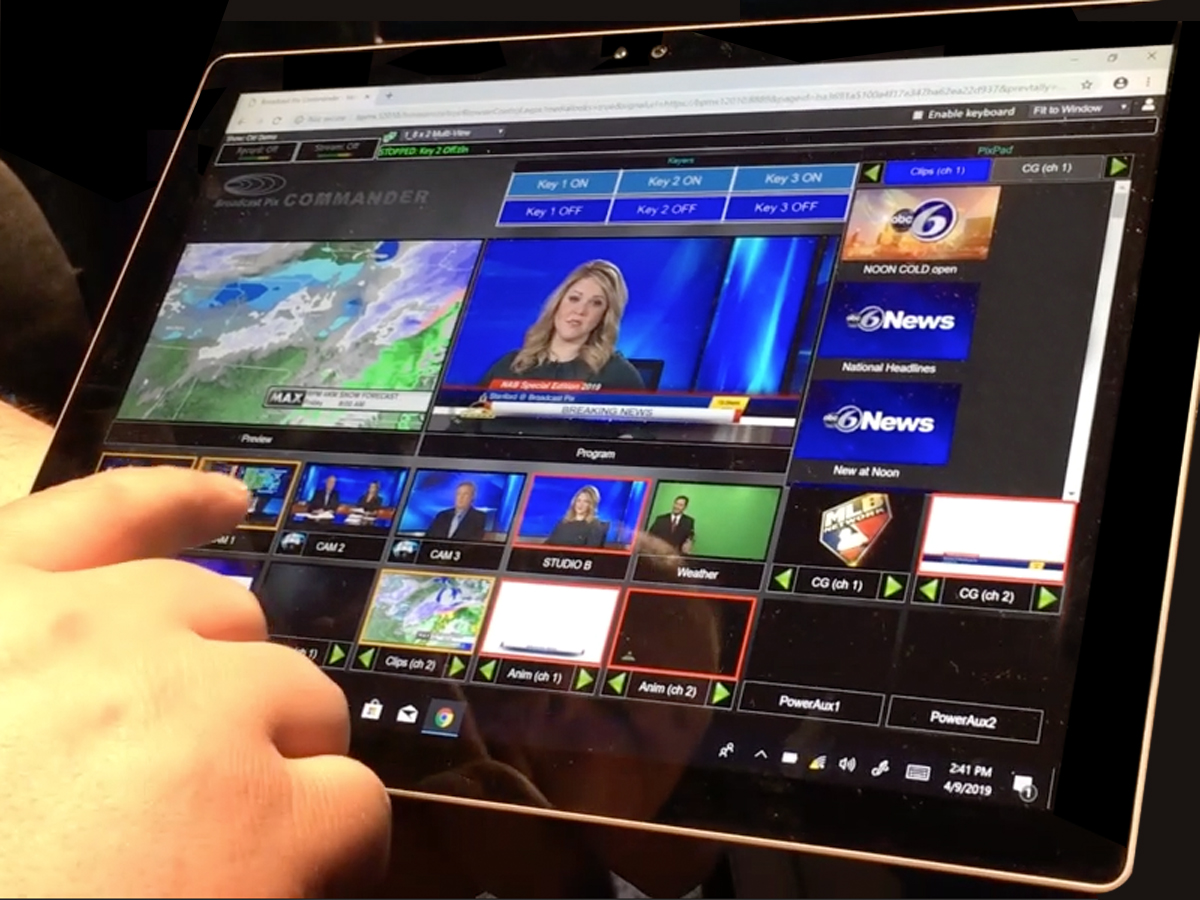Column: Moving to remote production

Subscribe to NCS for the latest news, project case studies and product announcements in broadcast technology, creative design and engineering delivered to your inbox.
The idea of a remote production is not new. Many large broadcasters have been trying to figure out for some time how to avoid the costly deployment of equipment, trucks and people to sports stadiums to cover events. For example, parts of the Olympics have been covered remotely for several years.
However, due to the pandemic, remote working has become more important as the ability to produce and stream broadcast quality content with as few people as possible at the venue has become critical.
A big enabler has been the advances made in the quality, controllability, and price of IP robotic PTZ cameras which clearly reduce the requirement for camera operators.
In my last article, I looked at approaches to control and automation and mentioned the importance of an abstracted architecture, thoughtfully compartmentalized and connected by off-the-shelf IP technology and protocols. This architecture perfectly lends itself to the move to remote productions, as functionality can be remotely operated and content contributed from a distance.
With an abstracted architecture, the cameras can be in one location, the integrated production software can be in a data room or in the cloud, and the control surfaces can be anywhere, all connected by the public internet.
Once in the IP domain, the architecture can bring many other advantages too.
For example, something we had not initially considered but found when we started deploying solutions is quite simply the ease of installation.
An IP camera only needs a single CAT5 cable for bidirectional communications and power. Connected to the internet via the right switch, the camera receives power over ethernet, as well as control and tally, and returns high quality (up to 4K) video – all in a single cable that is easy to install and manage.
The output can be converted back to traditional baseband video or streamed to multiple sources, again by a single connection to the public internet.
Newer video formats, such as NDI, not only provide high quality, low latency compressed video, but also self-discover – so devices using NDI connected to a network will identify themselves in the application software, even self-naming in the control system – moving IP-based systems significantly closer to the holy grail of being “plug-and-play.”
Together, all of these advances are making remote productions not only possible, but also easy to install, easy to operate and incredibly flexible:
- Acquisition: Cameras can be installed and controlled remotely with a single CAT5 cable and an internet connection.
- Processing: The integrated production solution can be hosted on site, remotely, or in the cloud, reducing cost, increasing utilization and making support easy
- Control: Multiple operators such as a graphics operator or technical director can work on the same event from remote locations, each with dedicated functional interfaces that can be either hardware panels or browser-based, even the technical director can be remote, viewing feeds and making creative switching decisions.
This is one of the biggest single trends that will impact integrated production solutions, and it is being accelerated by the pandemic.
It is also highly likely that once users get used to this new low-cost, yet high-quality, way of working, it will become the new normal.
Subscribe to NCS for the latest news, project case studies and product announcements in broadcast technology, creative design and engineering delivered to your inbox.




tags
Broadcast Pix, Graham Sharp, integrated production solutions, NDI, PTZ Cameras, Remote Production, Robotic Camera Control, robotic cameras
categories
Broadcast Engineering, Camera Control & Camera Robotics, Featured, IP Based Production, PTZ Cameras, Voices